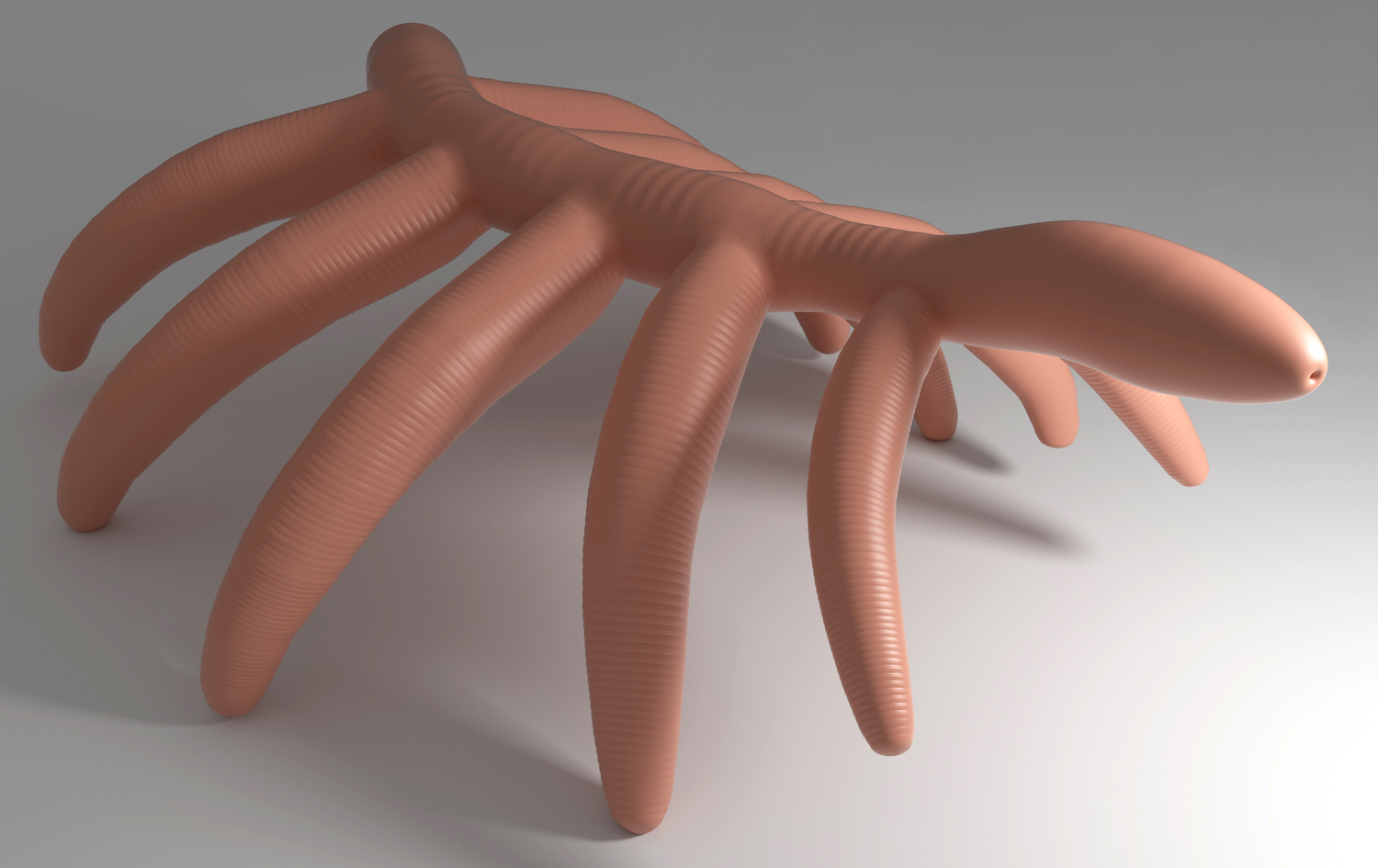Without Claws or Armor, 520-Million-Year-Old 'Naked' Critter Was Likely a Loner

A 'naked,' wormlike creature that lived in the ocean 520 million years ago was so defenseless, it likely lived as a recluse, evading hungry predators by hiding in dark crevices or among clusters of sponges, a new study finds.
The newly identified critter, which didn't have body armor or claws — making it remarkably vulnerable —lived during the Cambrian period, which lasted from about 543 million to 490 million years ago, the researchers said.
In contrast, fiercer wormlike creatures — such as Diania cactiformis, Hallucigenia sparsa and the so-called Collins' Monster — sported a mix of needle-like teeth and wicked spines, which probably made predators think twice before gulping them down. [Photos: 508-Million-Year-Old Bristly Worm Looked Like a Kitchen Brush]
The newfound worm animal is "unusual, as there is no sign of the spines or plates that are characteristic of other Cambrian lobopods" — small, segmented, wormlike animals that lived during the Cambrian period, said Derek Briggs, a professor in the Department of Geology and Geophysics at Yale University, who was not involved in the study.
"Cambrian lobopods tend to be 'armored,' whereas this one was apparently 'naked,'" Briggs added.
The finding is based on one specimen — measuring 1.1 inches (3 centimeters) — and it doesn't appear to have a mouth, eyes, tentacle-like appendages or a snout, study co-researchers Qiang Ou, a paleobiologist at the China University of Geosciences, and Georg Mayer, a zoologist at the University of Kassel in Germany, wrote in the study.
Instead, it simply has a tubular, segmented body with a pair of limbs coming off each segment, the researchers said. It was found in a type of shale made of compacted mud in Chengjiang, in China's Yunnan province.
Sign up for the Live Science daily newsletter now
Get the world’s most fascinating discoveries delivered straight to your inbox.
The scientists named the naked critter Lenisambulatrix humboldti. Its genus name combines the Latin words "lenis" and "ambulatrix," which mean "smooth and soft"; and "walker," respectively. The species name honors Friedrich Wilhelm Heinrich Alexander von Humboldt, a Prussian naturalist and explorer, as well as the Alexander von Humboldt Foundation, which helped pay for the new research.
Ou and Mayer compared L. humboldti with D. cactiformis, another lobopod that is colloquially known as the "walking cactus" because of its sharp spines.
Both of these critters had segmented bodies as well as thick, long legs that measured up to 0.7 inches (1.8 cm) long, or about the length of a penny. But while neither of these lobopodians had claws (perhaps as an adaptation that helped them walk on the soft seafloor), D. cactiformis used its many spines as a defensive armor, the researchers said. In addition, the "walking cactus" had a distinctive, helmet-like structure, whereas L. humboldti has none.
Given its total lack of defense and soft body, L. humboldti likely lived a reclusive life, hiding from anything that could nab it as a snack.
But, even though it was unknown for about 520 million years, L. humboldti couldn't hide from scientists forever.
"This new, 'naked' lobopod adds to the already considerable diversity of Cambrian lobopods," Briggs said.
The study was published online today (Sept. 20) in the journal Scientific Reports.
Original article on Live Science.

Laura is the archaeology and Life's Little Mysteries editor at Live Science. She also reports on general science, including paleontology. Her work has appeared in The New York Times, Scholastic, Popular Science and Spectrum, a site on autism research. She has won multiple awards from the Society of Professional Journalists and the Washington Newspaper Publishers Association for her reporting at a weekly newspaper near Seattle. Laura holds a bachelor's degree in English literature and psychology from Washington University in St. Louis and a master's degree in science writing from NYU.










